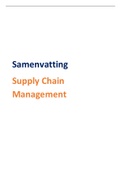Advanced Corporate Finance
MSc Finance
Tilburg University
Block 1
,Deel 1 - lecture 1
Filmpje 1
Finance source:
• Internal capital
• Retained earnings
• External capital
• Debt
• Equity
Debt Debt
‘Academic leverage’: Equity
or Total assets
Debt
‘Industry leverage’: EBIT
3X: three years of earnings levels & we will pay back your debt
Leverage can change because of: Debt issued/payed back Equity issued/payed back
Filmpje 2
Modigliani-Miller irrelevance theorem:
Assumptions:
1. Perfect financial markets
2. All agents have the same information
3. No bankruptcy costs
4. No taxes
Original propositions:
• MM1: Firm’s total market value independent of capital structure
• MM2: Firm’s cost of equity increases with debt-equity ratio
• Dividend irrelevance: Firm’s total market value independent of dividend policy
1
, • Investor irrelevance: Individual investors are indifferent to financial policies
MM1:
• Value of firm = Present value of future cash flows
• When a firm issues debt &equity, it splits cash flows into 2 streams
– Safe stream to bondholders
– Risky stream to shareholders
• Capital structure irrelevant for firm value
EBIT
• Vu = VE = rU
VE = VL + B
−Int)
VL = D + E = (Int+(EBIT
ru
Filmpje 3
MM2:
D E
• W ACC = D+E
∗ rD + D+E
∗ rE
rE = (W ACC − rD ) D
E
+ W ACC
D
• If W ACC > rD , rE increasing with E
Two types of risk:
• Business risk
• Financial risk
– Debt is senior to equity
– If company is liquidated:
* Debt holders have fixed claim
* Gains/losses taken over by the shareholders
D
Risk: βL = βU (1 + E
)
2
, Filmpje 4
Investor indifference
Different investors prefer different consumption streams
Companies should not care about risk preference of investors
,→ Investor’s utility depends on consumption, not financial assets
Manager should not care about risk preference of investors
Just need that investors have the ability to borrow & lend for their own account so they can ‘undo’
any changes in firm’s capital structure
Filmpje 5
MM’s most basic message:
• Value is created only by operating assets
• Financial policy should be a means to support operating policy, not an end in itself
MM helps to avoid first order mistakes
Filmpje 6
Efficiency: Introduction of taxes & subsidies may distort otherwise socially optimal decisions
Financial stability: companies may issue ‘too much’ debt, putting pressure on the banking system
Debt ∗ rD ∗ Tax rate
P V (Tax shield) = = Debt ∗ Tax rate
rD
Firm value = value of all-equity firm + present value of tax shield
Filmpje 7
NID: Notional Interest Deduction: subsidize equity
,→ allows firms to deduct from taxable income a notional charge equal to ’equity ∗ ri ’ based on
historical long-term government bonds
3
MSc Finance
Tilburg University
Block 1
,Deel 1 - lecture 1
Filmpje 1
Finance source:
• Internal capital
• Retained earnings
• External capital
• Debt
• Equity
Debt Debt
‘Academic leverage’: Equity
or Total assets
Debt
‘Industry leverage’: EBIT
3X: three years of earnings levels & we will pay back your debt
Leverage can change because of: Debt issued/payed back Equity issued/payed back
Filmpje 2
Modigliani-Miller irrelevance theorem:
Assumptions:
1. Perfect financial markets
2. All agents have the same information
3. No bankruptcy costs
4. No taxes
Original propositions:
• MM1: Firm’s total market value independent of capital structure
• MM2: Firm’s cost of equity increases with debt-equity ratio
• Dividend irrelevance: Firm’s total market value independent of dividend policy
1
, • Investor irrelevance: Individual investors are indifferent to financial policies
MM1:
• Value of firm = Present value of future cash flows
• When a firm issues debt &equity, it splits cash flows into 2 streams
– Safe stream to bondholders
– Risky stream to shareholders
• Capital structure irrelevant for firm value
EBIT
• Vu = VE = rU
VE = VL + B
−Int)
VL = D + E = (Int+(EBIT
ru
Filmpje 3
MM2:
D E
• W ACC = D+E
∗ rD + D+E
∗ rE
rE = (W ACC − rD ) D
E
+ W ACC
D
• If W ACC > rD , rE increasing with E
Two types of risk:
• Business risk
• Financial risk
– Debt is senior to equity
– If company is liquidated:
* Debt holders have fixed claim
* Gains/losses taken over by the shareholders
D
Risk: βL = βU (1 + E
)
2
, Filmpje 4
Investor indifference
Different investors prefer different consumption streams
Companies should not care about risk preference of investors
,→ Investor’s utility depends on consumption, not financial assets
Manager should not care about risk preference of investors
Just need that investors have the ability to borrow & lend for their own account so they can ‘undo’
any changes in firm’s capital structure
Filmpje 5
MM’s most basic message:
• Value is created only by operating assets
• Financial policy should be a means to support operating policy, not an end in itself
MM helps to avoid first order mistakes
Filmpje 6
Efficiency: Introduction of taxes & subsidies may distort otherwise socially optimal decisions
Financial stability: companies may issue ‘too much’ debt, putting pressure on the banking system
Debt ∗ rD ∗ Tax rate
P V (Tax shield) = = Debt ∗ Tax rate
rD
Firm value = value of all-equity firm + present value of tax shield
Filmpje 7
NID: Notional Interest Deduction: subsidize equity
,→ allows firms to deduct from taxable income a notional charge equal to ’equity ∗ ri ’ based on
historical long-term government bonds
3









